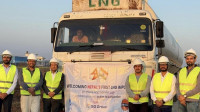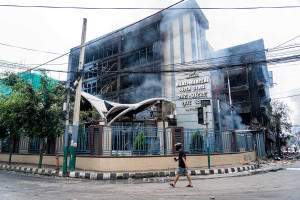Money
Developers eye world’s second highest cable car project in Gosainkunda
The 9.4 km Gosainkunda cable car project’s upper terminal has been recommended at an altitude of 4,205 m
Balaram Ghimire
The development of a cable car project in Gosainkunda, Rasuwa—the second highest in the world—has moved a step forward as two developers have applied to prepare the environment impact assessment report for the project.
The project will see its upper terminal being built 4,200 metres above sea level.
If constructed, it will also be one of the world’s longest cable cars. The Tourism Ministry had conducted a pre-investment feasibility study of the project in 2008. The 9.4 kilometre-long Gosainkunda cable car project’s upper terminal was recommended at an altitude of 4,205 m.
On May 1, 2008, the world’s highest cable car was officially put into operation on the Dagu glacier in Sichuan province, China. Its base station is situated at 3,617m, reaching up to its incline station at 4,843m above sea level. Because of the high altitude, cabins are equipped with oxygen bottles in order to provide passengers with sufficient air supply if necessary.
Gosainkunda is one of the sacred alpine freshwater lakes in Nepal. Thousands of devotees from Nepal and India visit this lake every year to pay homage to the Hindu God and Goddess Shiva and Gauri respectively on the special occasion of Janai Purnima. They perform a holy bath in this lake.
The area has also become a key attraction for trekkers.
According to Langtang National Park, Gosainkunda Rural Municipality and Ghyangphedi-Gosainkunda Cable Car, Maharajgunj have separately applied to prepare the environment impact assessment report.
Shiva Lal Gaire, information officer at the Langtang National Park, said that Gosainkunda Rural Municipality has applied to prepare the report for the 9.4 km Dupcheshwor-Gosainkunda stretch. This stretch will have at three terminals and 25 towers, according to the company.
Similarly, Ghyangphedi-Gosainkunda Cable Car, Maharajgunj has applied to prepare the environment report for the 6.5 km Dhunchhe-Gosainkunda stretch that will have 2 terminals and 28 towers.
Both proposals were submitted at the Department of National Parks and Wildlife Conservation. Following which, the department had asked for the pre-feasibility and field visit reports from the Langtang national park.
“We have already sent the necessary documents to the department,” said Gaire.
Kaisang Nurpu Tamang, the ward chairman of Gosainkunda Rural Municipality, said that their rural municipality has initiated a plan to construct the Dhunchhe-Gosainkunda cable car.
Tamang recently visited France and held discussions with a numbers of stakeholders including the Nepali ambassador to France Deepak Adhikari regarding the project modality, said Tamang. “The project will be constructed under the public-private-partnership model,” he said. The total cost of the project may hit Rs1.75 billion, according to the preliminary report.
As the project is close to the Nepal-China border of Rasuwagadhi, we can attract a large number of Chinese tourists to the religious sites, he said. However, the department has been delaying permission for the environment impact assessment report, sources said. An official at the department said that they have prepared a working and monitoring guideline for tourist services at the restricted areas. All issues related to the operation of cable car and other services have been included in the guideline.
The Ministry of Forest and Environment has been holding discussion on the new guideline.
“As soon as it is approved, it will allow the developers to begin construction,” said Bishnu Shrestha, under secretary at the department.




 12.12°C Kathmandu
12.12°C Kathmandu













%20(1).jpg&w=300&height=200)
